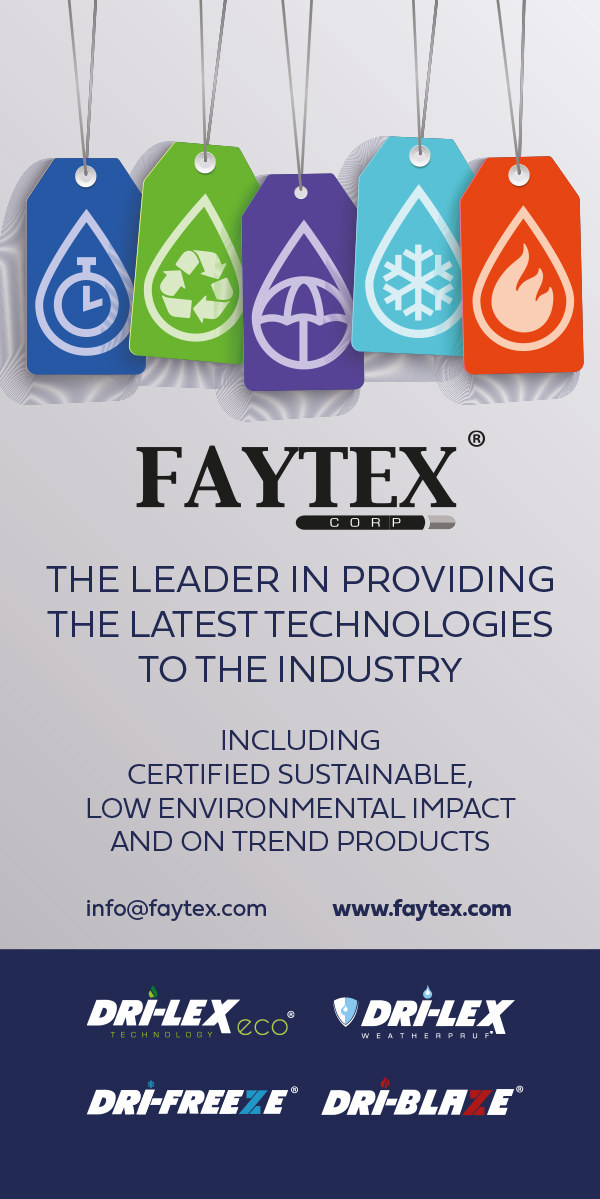Innovative footwear recycling

Borja Mateu, Ana Belén Muñoz and Elena Orgilés INESCOP Footwear Technology Centre
Global footwear production has increased significantly to reach approximately 22.5 billion pairs, an increase of 8.6% over 2020. It is expected to grow steadily in the coming years, potentially reaching 25 billion pairs in 2025 and 27 billion by 2030. However, the current recycling rate is barely 5%, with the majority ending up in landfill or being incinerated once they have reached the end of their useful life. One possible way to address this problem is through donation to charities, so as to maximise reuse and extend product life through second-hand markets, but the rise of fast fashion characterised by low quality products and high manufacturing rates, has led to the export of large quantities of donated clothing to third world countries generating significant environmental, social and economic impacts.
At a European level, the solution to this problem is framed within legislative initiatives that seek to prevent the generation of waste and to establish the responsibility of producers. INESCOP, a leader in sustainable solutions applied to footwear, addressed this challenge through the development of technologies and processes for the footwear industry, as in the case of the design, implementation and validation of a mechanical recycling plant for footwear. This solution is in line with the European Union’s (EU) vision of a the circular economy and uses clean and innovative technologies to obtain separated residuals with the potential for reuse in various applications and industrial sectors.
To this end, collaboration with companies has been essential, through which a circular economy in the footwear value chain is sought to be democratised. In this sense, the use of technologies such as artificial vision and eco-design are proposed in order to improve the separation of materials and increase their recyclability. This innovative approach, focused on mechanical recycling, contributes towards meeting EU targets for waste management and promoting the circular economy in the footwear industry, thus reducing its carbon footprint and promoting the circularity of materials.
A new Europe based on circular economy
Faced with this loss of resources with a high potential for recovery, Europe is seeking to make sustainable products the norm and to implement a circular economy model. This is illustrated by the increase in legislative proposals and publications such as Directive (EU) 2020/998 on the prevention of waste generation and on waste management. This aims to reduce the generation of household waste by 55% by 2035. Directive (EU) 2019/904 on textile waste aims to collect at least 50% of textile and footwear waste by 2025 and 65% by 2030. Directive (EU) 2019/904 on extended producer responsibility lays down that footwear producers/manufacturers are still responsible for the management of shoes once they reach the end of their useful life.
Legislation is a key part of the EU’s strategy to promote the circular economy in order to help minimise waste generation, increase recycling and recovery of waste, and prevent pollution. Commitment to the environment remains a major challenge for the whole world, but especially for Europe, where the European Green Deal sets out how to become the first climate-neutral continent by 2050 by boosting the economy, improving citizens' health and quality of life and applying the principles of a circular economy, which is only possible through the eco-design of products and the implementation of innovative clean recycling technologies.
Innovative solutions to major challenges
INESCOP has been working for more than 50 years providing solutions to the challenges faced by the footwear industry. Currently, among its main research lines is mechanical, chemical and biological recycling. The footwear industry is characterised by the variety and variability of materials and components used, as well as the customisation and ephemeral designs that the industry develops to meet consumer demands. All this is combined with a need to create quality footwear that ensures the durability and comfort of the product by means of durable bonding between the components. This is one of the factors that makes it difficult to recycle footwear at the end of its useful life.
Among the various recycling routes currently available, the European Union highlights mechanical recycling as one of the best technologies as it preserves existing materials without decomposing them, maintaining performance and durability standards in recycled products, and widening the range of reuse possibilities. These technologies are characterised by lower energy consumption than other thermal means and the fact that they do not release direct emissions into the atmosphere.
Recycling as a tool to achieve footwear circularity
The recyclability of footwear implies adapting solutions to the current production system, focusing on implementing a circular economy, all at a low cost through scalable and globally replicable systems. As a result of INESCOP's experience, together with research into new technologies and the development of advanced materials and technologies, the development of the first pilot plant for the recycling of footwear was launched in 2019 in the framework of the Circular Industry - CV project. The plant was officially inaugurated in 2022.
The plant is a continuous automated system capable of processing up to 500kg/h of whole footwear without the need for prior sorting. It is designed to process all types of footwear, such as that collected in bins on the street, unsold stock, defective production and selective waste collected by brands. The recycling line itself is made up of machinery from different manufacturers and sectors, including glass recycling, mining and plastic recycling machinery, which have been integrated and adapted to the characteristics of different types of footwear, such as occupational footwear, safety footwear, sneakers and high-heeled shoes, among many others. This versatility allows the processing of all types of footwear and futhurmore, it is replicable and scalable.
This innovative process is based on physical principles applied according to the nature of the materials involved. It starts with a pretreatment where the material is torn in order to homogenise it and free the internal parts that make up the footwear and that cannot be seen with the naked eye, such as steel shanks and toecaps. All the metal parts are classified by means of magnetised separators. These metals have a high purity with a value set by the market price and for which there are already established ways of recovery in the metallurgic industry.
The rest of the metal-free footwear materials continue along the recycling line where they are reprocessed down to a specific particle size, ensuring separation between the different components, such as the separation of the upper from the sole or the outer leather from an inner laminate. This mixture of released materials is classified by means of an optimal granulometric process for subsequent densiometric sorting to obtain differentiated residues based on different parameters such as: the inclination of the table, size of the grid, blowing and suction flow rate or frequency and cadence of vibration. Other affecting parameters are opening of the air inlets and exit height of trays. The system is supported by inductive currents for the separation of non-ferrous metals.
All these parameters influence the quality of the materials obtained and their subsequent applications. By means of a programmable logic controller (PLC) and the recipes developed for the different types of footwear, the equipment is adjusted to obtain the best performance. Finally, separate residuals of textile fibres, heavy polymers, foams and leather are obtained, which have the potential to be reused in different applications already validated by the technology centre and the collaborating companies.
Maximising the use of waste
Waste recovery consists of adding value, maximisingits use and reducing the associated environmental impacts. Using the materials obtained, INESCOP has successfully validated different recovery routes for the various materials which are already being replicated by collaborating companies. Among subsequent reuses, surfacing for playgrounds, athletics tracks, bicycle lanes, gym floors and road pavements stand out. This material replaces virgin raw materials, while improving the properties of the final product, with better technical performance in terms of cushioning, water drainage and noise reduction for road traffic. Some residuals obtained from the recycling process can be utilised in the building sector through the creation of insulation panels or the manufacture of furniture, both of which are proving successful.
Applications have also been validated to close the loop in the same value chain by creating footwear components from footwear waste and verifying compliance with technical requirements for footwear in the technology centre’s laboratories. Other recovery options come from the symbiosis with other industrial sectors such as the utilisation of textile fibres in packaging paddings or in the stuffing of soft toys.
To boost the positive impact of the recycling plant, INESCOP works directly in collaboration with companies to democratise the implementation of a circular economy in the entire footwear value chain. Noteworthy among the research lines is the use of artificial vision equipment to enhance the sorting of raw materials by nature and by colour, and the eco-design of products to increase recyclability as well as the study of the compatibility of materials for their recovery. These research lines are supplemented by the research centre's work on leather recycling, EVA de-crosslinking, pyrolysis, glycolysis, detachable adhesives, biodegradation and composting, among others.
Circularity potential
European environmental policies have laid down regulations and targets for waste management and the promotion of the circular economy. Mechanical recycling is in line with these initiatives and contributes to meeting regulatory requirements, being one of the priority technologies after reuse. Mechanical recycling can better preserve the quality of materials, which facilitates their incorporation in new products or their preparation for other recovery processes. This is essential in order to maintain the high quality and durability requirements for recycled products.
This technology, together with the eco-design of footwear, has enormous circularity potential for the industry, where it has been possible to demonstrate the implementation of circular economy principles, thereby minimising the generation of waste. Footwear recycling through this process has proved successful. It also causes no water consumption, separation in liquid media, direct emissions into the atmosphere and no damage to soil and water resources.
Furthermore, it can be powered by 100% renewable energy with a neutral carbon footprint. Through Life Cycle Assessment calculations using Simapro software and the Ecoinvent database, it has been estimated that around 1kg of CO2e per pair of shoes could be saved with this technology compared to the possibility of such shoes ending up in landfill. In addition, it contributes to reducing the demand for new resources and the extraction of raw materials.
It has proved to be a successful project and numerous footwear companies are interested in the results. Some have started recyclability studies and have tested the process with real samples, scaling and developing several products from ground waste to be employed in the production of different components. With this clean solution, a real circular economy is possible. This serves to improve competitiveness in industry by creating ecosystems in which the waste of some becomes raw materials for others, thus reducing dependence on external markets.
The authors wish to acknowledge the support of the Valencian Institute of Business Competitiveness (IVACE) of Generalitat Valenciana in Spain, and the European Union’s Regional Development Fund (ERDF) through their R&D Programme for Technology Institutes. IMDEEA/2023/76-ECOINDUSTRY.
Footwear recycling plant in Elda, Alicante, Spain.
ALL CREDITS: INESCOP












